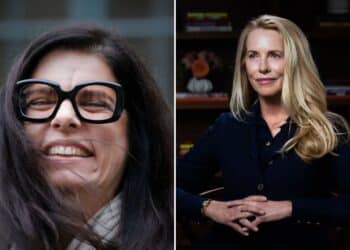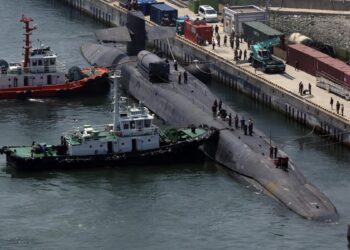[ad_1]
On January 5, two days ahead of the Russian Orthodox Christmas, Patriarch Kirill of Moscow and All Russia called on “all parties” involved in the 10-month-old Ukraine war to establish a Christmas truce. Within hours, the Kremlin declared a unilateral ceasefire from Friday noon through Saturday (Christmas day) midnight along the entire frontline. Whether the Kremlin listened to the Patriarch or the Patriarch called for what the Kremlin wanted, the incident, once again, showed the close relationship between the church and the officially secular state in Russia.
The day before Russian President Vladimir Putin announced his special military operation on February 24, 2022, Patriarch Kirill, 76, hailed Russian troops “as defenders of the fatherland”. Weeks after the invasion began, he said the conflict had “metaphysical significance” for both Russians and Ukrainians. “We are talking about human salvation.”
The Patriarch’s comments were hardly surprising. Ever since his anointing as the Patriarch by the Holy Synod, a council of bishops, in 2009, he has largely taken positions that are aligned with the Kremlin’s interests. He supported Russia’s intervention in Syria in 2015. He also backed Russia’s policies towards eastern Ukraine where the crisis broke out in 2014 after the elected government of Viktor Yanukovych was brought down by West-backed protesters.
This crisis cost the Russian Orthodox Church dearly. For centuries, the Ukrainian Orthodox Church was officially linked to the Russian Church. Both countries trace the origins of Orthodoxy to the 10th century when eastern Christianity was introduced to Kievan Rus, which included parts of today’s Ukraine and Russia. It became the official faith of the Russian Empire, but after the 1917 revolution, the Church lost its prominence.
Post-Soviet comeback
The Russian Orthodox Church would make a comeback to Russia’s public life in the 1990s after the disintegration of the Soviet Union. The Moscow Patriarch continued to oversee matters related to faith in both Russia and Ukraine. But in 2019, five years after Crimea was annexed by Russia, the Ukraine Orthodox Church broke away from Moscow and became an autonomous entity, with the blessings of the Patriarch of Constantinople, leader of Eastern Orthodoxy.
Born in 1946, in Stalin’s Russia, as Vladimir Gundyaev, the young Kirill grew up in a single-room apartment in Leningrad, now St. Petersburg. Like his father and grandfather, he too chose the path of priesthood. In 1970, he graduated from the Leningrad Seminary and took the name Kirill, after saint Cyril the Philosopher, a Byzantine theologian.
His grandfather was imprisoned and exiled several times by the communists for his church activities. Patriarch Kirill later said his grandfather, who told him not to be afraid of “anything but God”, was his inspiration. He rose through the ranks of the Church during the Soviet days. There were times when he was critical of the communist leadership. In the 1980s, he signed a resolution against the Soviets sending troops to Afghanistan after which he was banished from Leningrad. “I saw danger for the motherland in this,” he later recalled about the Soviet intervention in Afghanistan. But largely, he had a smooth relationship with Moscow.
Father Kirill was the representative of the Russian Orthodox Church to the World Council of Churches in Geneva. He travelled freely in the West even when there were restrictions on Soviet citizens from travelling abroad. But during Soviet time, the Church worked from within the limits set by the ruling party. This would change in 1991 with the collapse of the union.
After Kirill became the Patriarch in 2009, he tried to reform the church from within and build closer ties with the state. He held public rallies to attract youngsters to the church, opened a media wing to improve the church’s image and replaced a third of the Church’s nearly 300 bishops. When Mr. Putin returned to presidency in 2012 after a four-year stint as Premier, the Patriarch found a strong ally in the Kremlin. In Mr. Putin’s Russia, where roughly 70% of the people identify themselves as Orthodox Christians, the Church emerged as one of the pillars of the state ideology and the Patriarch became its high priest.
He was given high media attention and state support, while Orthodox values returned to the school syllabi. The Patriarch called Mr. Putin a “miracle” who “saved Russia from collapse”. He repeatedly slammed the “decadent” West, while Mr. Putin sought to counter the West geopolitically.
Growing tensions between Ukraine and Russia, however, posed a great challenge for the Patriarch. His support for Russia has cost him millions of followers in Ukraine after the schism. The war has made the relationship between the Russian and Ukrainian Orthodox Christians more complicated. But the Patriarch seems undeterred. “Russia is fighting for the future of all mankind,” he said in his Christmas message on Saturday, aired on Russian state TV.
[ad_2]
[ad_1]
On January 5, two days ahead of the Russian Orthodox Christmas, Patriarch Kirill of Moscow and All Russia called on “all parties” involved in the 10-month-old Ukraine war to establish a Christmas truce. Within hours, the Kremlin declared a unilateral ceasefire from Friday noon through Saturday (Christmas day) midnight along the entire frontline. Whether the Kremlin listened to the Patriarch or the Patriarch called for what the Kremlin wanted, the incident, once again, showed the close relationship between the church and the officially secular state in Russia.
The day before Russian President Vladimir Putin announced his special military operation on February 24, 2022, Patriarch Kirill, 76, hailed Russian troops “as defenders of the fatherland”. Weeks after the invasion began, he said the conflict had “metaphysical significance” for both Russians and Ukrainians. “We are talking about human salvation.”
The Patriarch’s comments were hardly surprising. Ever since his anointing as the Patriarch by the Holy Synod, a council of bishops, in 2009, he has largely taken positions that are aligned with the Kremlin’s interests. He supported Russia’s intervention in Syria in 2015. He also backed Russia’s policies towards eastern Ukraine where the crisis broke out in 2014 after the elected government of Viktor Yanukovych was brought down by West-backed protesters.
This crisis cost the Russian Orthodox Church dearly. For centuries, the Ukrainian Orthodox Church was officially linked to the Russian Church. Both countries trace the origins of Orthodoxy to the 10th century when eastern Christianity was introduced to Kievan Rus, which included parts of today’s Ukraine and Russia. It became the official faith of the Russian Empire, but after the 1917 revolution, the Church lost its prominence.
Post-Soviet comeback
The Russian Orthodox Church would make a comeback to Russia’s public life in the 1990s after the disintegration of the Soviet Union. The Moscow Patriarch continued to oversee matters related to faith in both Russia and Ukraine. But in 2019, five years after Crimea was annexed by Russia, the Ukraine Orthodox Church broke away from Moscow and became an autonomous entity, with the blessings of the Patriarch of Constantinople, leader of Eastern Orthodoxy.
Born in 1946, in Stalin’s Russia, as Vladimir Gundyaev, the young Kirill grew up in a single-room apartment in Leningrad, now St. Petersburg. Like his father and grandfather, he too chose the path of priesthood. In 1970, he graduated from the Leningrad Seminary and took the name Kirill, after saint Cyril the Philosopher, a Byzantine theologian.
His grandfather was imprisoned and exiled several times by the communists for his church activities. Patriarch Kirill later said his grandfather, who told him not to be afraid of “anything but God”, was his inspiration. He rose through the ranks of the Church during the Soviet days. There were times when he was critical of the communist leadership. In the 1980s, he signed a resolution against the Soviets sending troops to Afghanistan after which he was banished from Leningrad. “I saw danger for the motherland in this,” he later recalled about the Soviet intervention in Afghanistan. But largely, he had a smooth relationship with Moscow.
Father Kirill was the representative of the Russian Orthodox Church to the World Council of Churches in Geneva. He travelled freely in the West even when there were restrictions on Soviet citizens from travelling abroad. But during Soviet time, the Church worked from within the limits set by the ruling party. This would change in 1991 with the collapse of the union.
After Kirill became the Patriarch in 2009, he tried to reform the church from within and build closer ties with the state. He held public rallies to attract youngsters to the church, opened a media wing to improve the church’s image and replaced a third of the Church’s nearly 300 bishops. When Mr. Putin returned to presidency in 2012 after a four-year stint as Premier, the Patriarch found a strong ally in the Kremlin. In Mr. Putin’s Russia, where roughly 70% of the people identify themselves as Orthodox Christians, the Church emerged as one of the pillars of the state ideology and the Patriarch became its high priest.
He was given high media attention and state support, while Orthodox values returned to the school syllabi. The Patriarch called Mr. Putin a “miracle” who “saved Russia from collapse”. He repeatedly slammed the “decadent” West, while Mr. Putin sought to counter the West geopolitically.
Growing tensions between Ukraine and Russia, however, posed a great challenge for the Patriarch. His support for Russia has cost him millions of followers in Ukraine after the schism. The war has made the relationship between the Russian and Ukrainian Orthodox Christians more complicated. But the Patriarch seems undeterred. “Russia is fighting for the future of all mankind,” he said in his Christmas message on Saturday, aired on Russian state TV.
[ad_2]
















